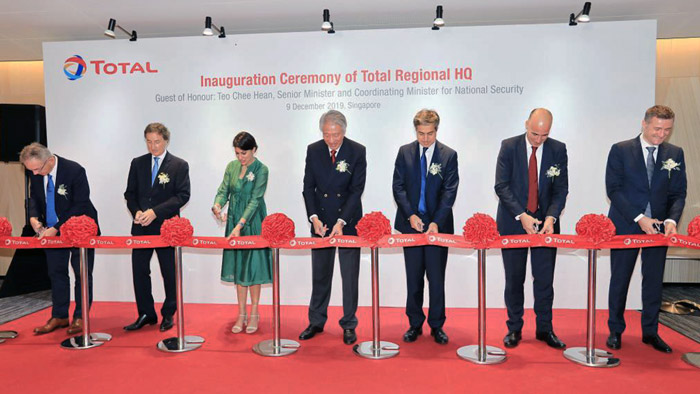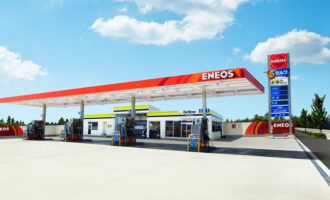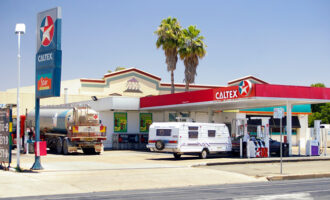
Total expands regional headquarters in Singapore to accelerate growth in Asia Pacific
Total announced the launch of its new and expanded regional headquarters in Singapore on Monday, further affirming the company’s 37 years of presence in the country since 1982 and its continued investment in the local and regional energy sector. A key super hub for Total, the regional headquarters is pivotal in driving business growth and innovation as well as talent development in Singapore and Asia Pacific.
Total’s expanded premises in Singapore occupies six floors of Frasers Tower, with a combined office and work café space of more than 125,000 sq ft. It houses both Total’s Asia Pacific headquarters with 500 employees across six business divisions – Exploration & Production; Gas, Renewables & Power; Refining & Petrochemicals; Marketing & Services; Trading & Shipping, Marine Fuels Global Solutions, and Total Global Services, a shared service organization.
“The inauguration of our new regional headquarters not only represents our next chapter of sustainable growth, but also reaffirms Total’s commitment to invest and develop in Singapore for the long-term. We look forward to continue working with the government, local institutions and our customers and partners to realise our ambition of becoming the responsible energy major,” said Christian Cabrol, president and CEO, Total Oil Asia Pacific/ country chair Singapore.
Total’s new APAC headquarters is in line with its organisational ambition to realise One Total, One Country, by bringing all the entities under one roof. It aims to drive operational efficiencies, facilitate greater synergies and collaboration, accelerate innovation to offer holistic solutions to customers as well as providing a conducive working environment for talent development and growth.
“We are pleased that Total has selected Singapore as its strategic hub for Asia, marking a milestone in our longstanding partnership. As Singapore works towards building a sustainable, smart energy future, we are committed to working closely with industry players such as Total to address growing energy demands and our climate change commitments.” said Teo Chee Hean, senior minister and coordinating minister for National Security, Singapore. Teo is also Total’s International Advisory Committee member.
The presence of the Total Automotive Lubricants team in Singapore is a clear signal of its growing importance in the Total’s strategy. The team including global market segment managers, product engineers and key account managers, serves the Asia Pacific Middle East zone. This is the largest lubricants market in the world, with China and India being key markets, alongside Japan which has an important global leadership in the lubricants technical landscape.
Earlier this year, Hutchinson SA, a subsidiary of Total, set up a “Digital Research Lab for Asia” next to the Nanyang Technological University in Singapore. A team of data scientists and Internet of Things (IoT) engineers are focused on data collection and analysis, testing and deploying innovative rubber and thermoplastics-based product solutions for the automotive and aerospace industries.
Total also has made Singapore its hub for its renewable energy business in Asia. Through Total Solar DG Southeast Asia, a wholly owned affiliate of Total Solar Distributed Generation, the group is one of the major international providers of fully integrated solar solutions for commercial and industrial customers in Southeast Asia. It manages a portfolio of more than 400 MW of projects in development and operation.
The French energy major started its operations in Singapore in 1982 with oil trading and lubricant sales. Since then, Total has been expanding its presence, including the construction of its largest lubricant blending plant at the Singapore Lube Park, where it shares logistics facilities with Shell and Sinopec. Last month, Total announced the solarisation of the lube blending plant, which will cover 35% of the plant’s energy needs and reduce its reliance on traditional fuels.









